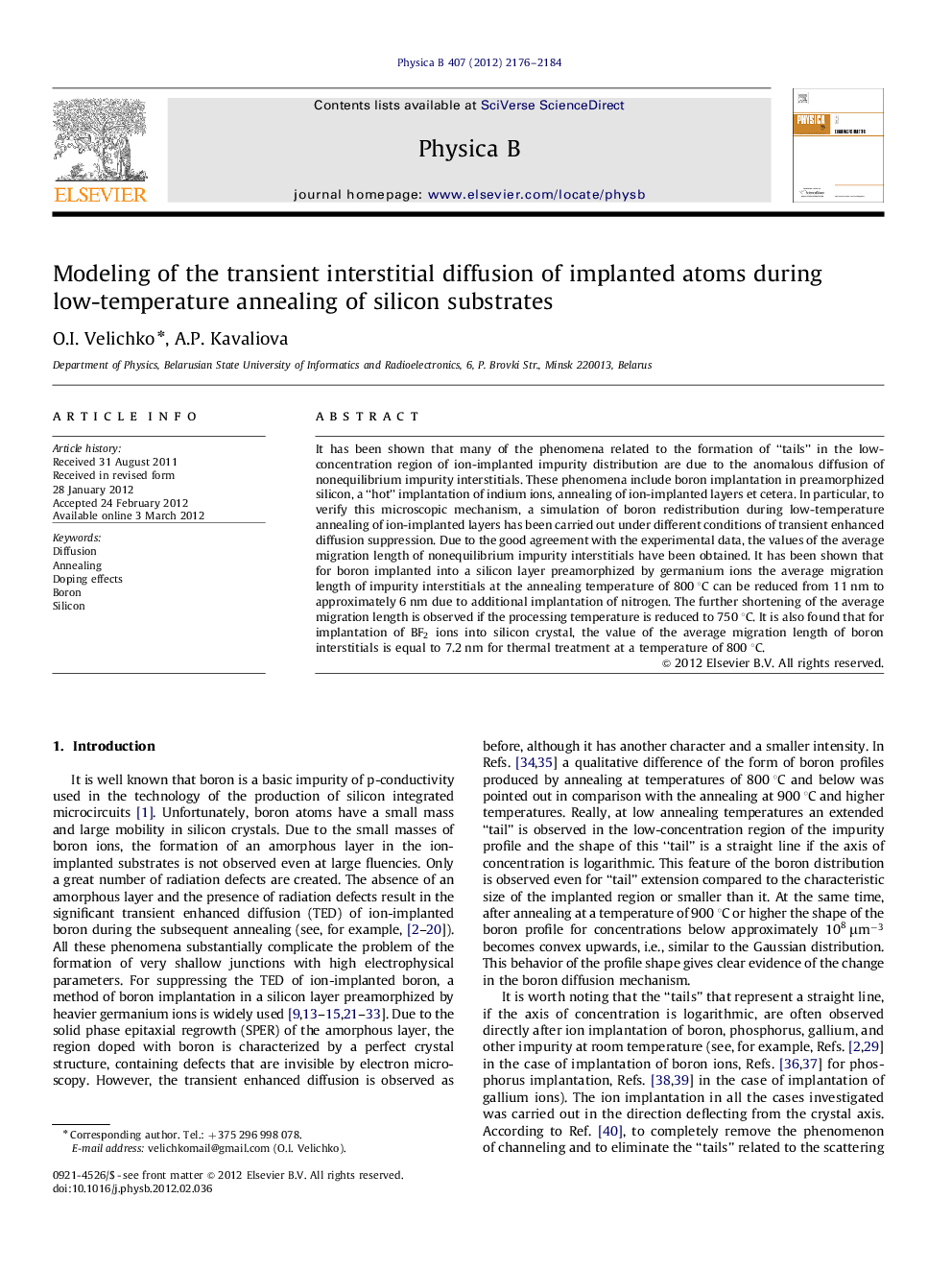| Article ID | Journal | Published Year | Pages | File Type |
|---|---|---|---|---|
| 10714176 | Physica B: Condensed Matter | 2012 | 9 Pages |
Abstract
It has been shown that many of the phenomena related to the formation of “tails” in the low-concentration region of ion-implanted impurity distribution are due to the anomalous diffusion of nonequilibrium impurity interstitials. These phenomena include boron implantation in preamorphized silicon, a “hot” implantation of indium ions, annealing of ion-implanted layers et cetera. In particular, to verify this microscopic mechanism, a simulation of boron redistribution during low-temperature annealing of ion-implanted layers has been carried out under different conditions of transient enhanced diffusion suppression. Due to the good agreement with the experimental data, the values of the average migration length of nonequilibrium impurity interstitials have been obtained. It has been shown that for boron implanted into a silicon layer preamorphized by germanium ions the average migration length of impurity interstitials at the annealing temperature of 800 °C can be reduced from 11 nm to approximately 6 nm due to additional implantation of nitrogen. The further shortening of the average migration length is observed if the processing temperature is reduced to 750 °C. It is also found that for implantation of BF2 ions into silicon crystal, the value of the average migration length of boron interstitials is equal to 7.2 nm for thermal treatment at a temperature of 800 °C.
Related Topics
Physical Sciences and Engineering
Physics and Astronomy
Condensed Matter Physics
Authors
O.I. Velichko, A.P. Kavaliova,
